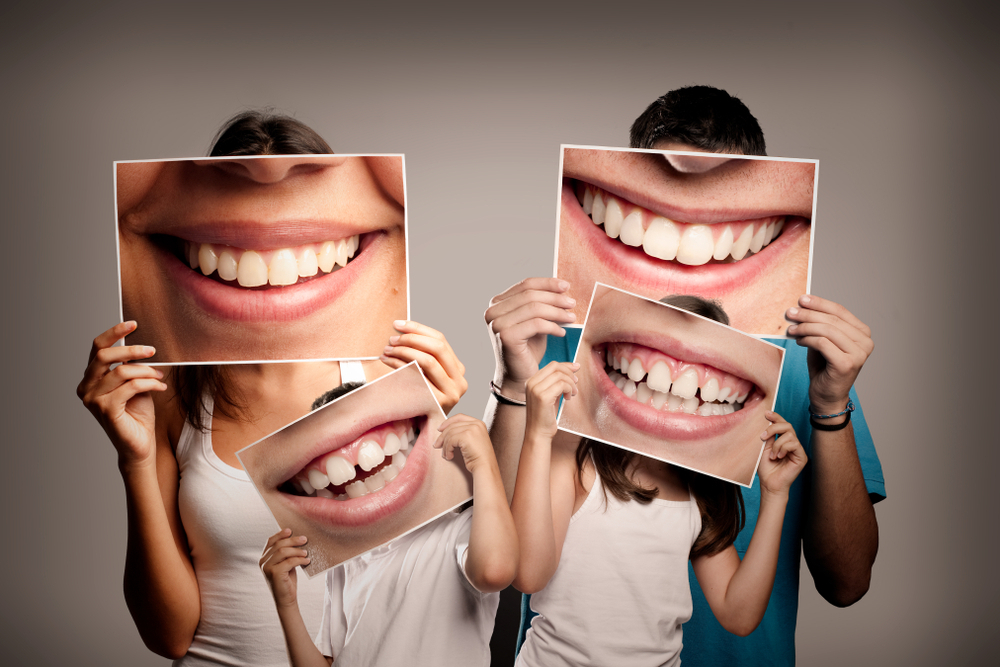The 2-Minute Rule for Legacy Orthodontics
The 2-Minute Rule for Legacy Orthodontics
Blog Article
How Legacy Orthodontics can Save You Time, Stress, and Money.
Table of ContentsOur Legacy Orthodontics StatementsExcitement About Legacy OrthodonticsThe Main Principles Of Legacy Orthodontics Legacy Orthodontics for BeginnersLegacy Orthodontics Fundamentals Explained
In enhancement, we provide flexible treatment schedules, adaptable payment options and a fun, satisfying experience.An orthodontist is a dentist educated to identify, protect against, and treat teeth and jaw abnormalities. They fix existing conditions and are educated to determine issues that may establish in the future. Orthodontists deal with people of every ages, from kids to adults. People typically associate an excellent smile with health.
Malocclusion, or misaligned teeth, can cause oral concerns, including dental caries, gum illness, and difficult or excruciating chewing. However not every person is birthed with straight teeth. If you have a poor bite or large rooms in between your teeth, you may want to consult a dental expert concentrating on orthodontic care.
The 8-Minute Rule for Legacy Orthodontics
( Image Credit Rating: DigitalVision/Getty Images) Orthodontists make use of dealt with and detachable dental gadgets, like dental braces, retainers, and bands, to alter the setting of teeth in your mouth. Orthodontic treatment is for oral problems, including: Misaligned teethBite problems, like an overbite or an underbiteCrowded teeth or teeth that are as well much apartJaw misalignmentThe goal of orthodontic treatment is to enhance your bite.
A healthy and balanced bite ensures you can eat, chew, and speak appropriately. While you might assume of orthodontists as primarily for kids or young adults who require braces, they can deal with oral issues at any type of age. Orthodontists go to college, dental school, and orthodontic college. After college graduation, they invest 2 or 3 years in an orthodontic residency program.
, but not all dental practitioners are orthodontists. They focus on 2 locations: Just how to properly and securely relocate teeth Exactly how to effectively lead growth in the teeth, jaw, and faceOnce an orthodontist has finished training, they have the alternative to end up being board accredited.
What Does Legacy Orthodontics Do?
Misalignment, or malocclusion, is one of the most common reason individuals see an orthodontist. It is genetic and is the outcome of dimension distinctions in between the upper and lower jaw or in between the jaw and teeth. Malocclusion results in tooth overcrowding, a twisted jaw, or irregular bite patterns. Malocclusion is typically treated with: Your orthodontist attaches metal, ceramic, or plastic square bonds to your teeth.
If you have only small malocclusion, you may be able to utilize clear braces, called aligners, as opposed to conventional dental braces (https://www.storeboard.com/legacyorthodontics1). Some individuals require a headwear to assist relocate teeth into line with stress from outside the mouth. After braces or aligners, you'll need to use a retainer. A retainer is a customized device that maintains your teeth in location.
They're frequently utilized on kids. They can produce added area in the mouth without having to pull teeth. If you have a severe underbite or overbite, you could need orthognathic surgery (likewise called orthodontic surgery) to extend or reduce your jaw. Orthodontists use cables, surgical screws, or plates to sustain your jaw bone.
You might require to see an orthodontist if you have: Crowding or otherwise enough space for all of your teethOverbite, when your top teeth come by your bottom teethUnderbite, when your base teeth are basics as well much forwardSpacing or concerns with gapsCrossbite, which is when your top teeth fit behind your bottom teeth when your mouth is closedOpen bite or an upright void between your front bottom and upper teethMisplaced midline, when the facility of your base and upper teeth don't line up Fixing an oral malocclusion can: Make biting, chewing, and speaking easierImprove the symmetry of our face and your total appearanceEase pain from temporomandibular joint disordersSeparate your teeth and make them much easier to cleanse, helping avoid tooth decay or cavities It's typically a dentist who first notices misaligned teeth throughout a regular test.
Legacy Orthodontics Things To Know Before You Buy

Throughout your very first orthodontic consultation, you'll likely have: A dental examPhotos taken of your face and smileDental X-raysPanoramic (360 level) X-rays of your face and headImpressions to develop molds of your teethThese tests will aid your orthodontist know just how to proceed with your treatment. orthodontist. An orthodontist is a dental professional who's had training to treat your teeth and jaw
Orthodontists may carry out surgery, exams,X-rays,and even more to help you acquire a more comfy, healthier smile. An orthodontist is concentrated on your bite, so something like a damaged tooth would be taken care of by a dental practitioner. Orthodontists are dentists but not all dental practitioners are orthodontists. Orthodontists are concentrated on your bite, or the means your teeth fit with each other, and the straightness of your teeth.
Ever wondered how celebs constantly appear to have flawlessly straightened teeth? Orthodontists are oral professionals who concentrate on fixing abnormalities in the teeth and jaws.
Legacy Orthodontics Fundamentals Explained

, orthodontists have a varied toolkit at their disposal. These reliable dental braces use a system of brackets adhered to the teeth and attached by wires.
Clear aligners, like Invisalign, are a prominent alternative for people looking for a more discreet therapy option. These detachable trays are custom-made to gradually change the teeth's placement. Headwear might be utilized together with dental braces or aligners to use extra targeted forces, particularly for remedying jaw inconsistencies. In cases of slim jaws, palatal expanders can be utilized to create area for correct tooth positioning.
Report this page